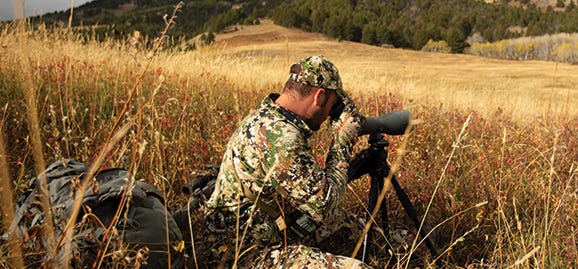Choosing a good spotting scope can be tough, especially if you’re not an expert on optics! That’s why in this article, we’ll be comparing the Razor HD scope to the Viper HD scope to see if the Razor is really worth the extra money.
Let’s start with a quick tech spec comparison chart.

| Vortex Viper Scope | Vortex Razor Scope | |
| Lenses | HD Lens | HD + APO* |
| Lens Coating | XR | XR Plus* |
| Magnification | 15-45x | 22-48x |
| Linear Field Of View | 136.5-67.8 ft/1000 yds | 138-84 ft/1000 yds |
| Angular Field Of View | 2.6-1.3 degrees | 2.7-1.6 degrees |
| Close Focus | 23 feet | 26.2 feet |
| Extras | X | Rotating Tripod Ring |
| Check Price | Check Price |
Vortex Viper Spotting Scope vs Razor Spotting Scope Differences: Explained
Okay, but what does all this mean? With optics, it can be really hard to tell when you’re just comparing specs. So, let’s dive into those little asterisks on the charts to see what they really mean to you, the Outdoorsman.
Vortex APO System
Vortex’s APO system uses something called index-matched lenses. This means that the lenses have an index of refraction that closely approximates each other. This corrects colors across the entire visual spectrum, making nice, crisp, clear images.
The real question you need to ask yourself though, is whether or not this feature is worth the price to you. For some people, like bird watchers, extra clear images are needed for identification, but for hunters, it might not matter as much.
The bottom line though is that images will not be as clear and beautiful as they could be if you’re viewing them through the Viper when compared to the razor. Just how much of a difference does this make? The video below does a pretty good job of showing what kind of quality enhancement you can expect.
In addition to sharper colors and images, edge to edge clarity will also likely be better on the Razor. It’s hard to see that in the video, because some of the images were cropped by the uploader, I believe.
XR vs the XR Plus Multi-Coating
Our next big difference between the two is the lens coating. Many people who test out the Viper and the Razor side-by-side report seeing brighter images through the Razors. This is most likely due to the XR Plus coating, which allows for greater light transmission through your optics.
While it may be tough to tell the difference on a bright, clear day in good conditions, the Razor will really start to shine when light becomes scarce. You’ll likely find that the Razor greatly outperforms the Viper in low light conditions.
Plasma Tech – A Better Coating Process?
It’s hard to prove how valuable this is, but the Razors also have a more thorough coating procedure. Vortex claims that this process better durability of the lens coating and improved performance, though this is tough to measure.
Extras and Other Features
In addition to the enhanced lens features, the Razor also includes a rotating tripod ring, which allows you adjustable viewing angles. This feature is not present in the Viper, and is pretty nice to have.
The Razor is also an inch longer than the Viper, but manages to also be a bit lighter. It also offers improved specs in field of view, magnification, and close focus.
So, what’s the verdict? Is the Razor worth dropping more cash?
In our opinion, yes. While we gave the crown to the Vipers in our binoculars comparison, we’re going the other direction this time around. The Razor scope offers a lot more improvements over the Viper scope for the money when compared to the binoculars.
Though if you know that your hunting conditions tend to be fairly stable, with good light, you could get away with using the Viper with little noticeable differences. You can read some more reviews to help you make a decision at Amazon.

